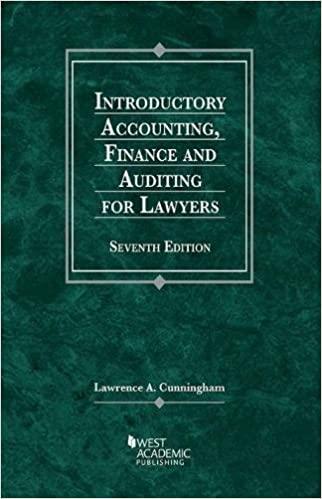Question
Maxing Out Qualified Plans Instructions: Reread textbook sections plan limitations on benefits and contributions (Dalton & Dalton, 2018, 14 th edition, pages 117-125 and complete
Maxing Out Qualified Plans
Instructions: Reread textbook sections plan limitations on benefits and contributions (Dalton & Dalton, 2018, 14thedition, pages 117-125 and complete the activities below:
Case problem: Kara and Kent went to high school together back in the 1970s and reconnected after finding each other (during 2000s) on an early social media website called MyFace. They experienced very similar life paths; each had been a stay-at-home parent until their children were grown and then they each began tech careers later in life (after age 50). Now it is the end of 2018, each is age 66, and ready to retire. During their short careers, each did what they could to maximize the benefits of having qualified retirement plans. In some cases they were effective and other times, less so.
Step 1. Defined Benefit Limit. Kara went into sales for a municipal cable/fiber-optic installation company that offered a defined benefit retirement plan. When Kara was age 62, she thought about retiring, but she actually retired at age 66. Calculate the retirement income from her pension in the first year of retirement under each scenario. How much is the difference between Karas pension and the maximum pension that was permissible by law? Show your calculations.
| Companys Defined Benefit Formula: (1.5% x Years x Ave of 3 highest consecutive years income)
| ||||
| Year | Covered Compensation Limits | Karas Annual Income | ||
| If retired at age 62 |
| If retired at age 66 | ||
| 2008 | $230,000 | $175,000 |
| $175,000 |
| 2009 | $245,000 | $400,000 |
| $400,000 |
| 2010 | $245,000 | $220,000 |
| $220,000 |
| 2011 | $245,000 | $250,000 |
| $250,000 |
| 2012 | $250,000 | $265,000 |
| $265,000 |
| 2013 | $255,000 | $280,000 |
| $280,000 |
| 2014 | $260,000 | $300,000 |
| $300,000 |
| 2015 | $265,000 | -- |
| $350,000 |
| 2016 | $265,000 | -- |
| $355,000 |
| 2017 | $270,000 | -- |
| $360,000 |
| 2018 | $275,000 | -- |
| $365,000 |
|
| 2014 Ret. Income |
|
| NA |
| 2018 Ret. Income | NA | NA |
| |
| Difference from Max |
|
|
| |
Step 2. Contributions to 401(k) Plans. Kent worked in research and development for a computer hardware manufacturer that specializes in ergonomic products. The company sponsors a 401(k) defined contribution plan that Kent and his employer have been contributing to since 2008. Kent and his Employer have been maxing out the contributions to his plan and it has been growing at 8% since the first end-of-year contributions in 2008. How much has each contributed and what is the total value of the retirement account? (Remember, each has separately contributed the max possible to the accountstart by maxing out Kents contributions and fill-in with the employer contributions.)
| Year | Contribution Limits | Kents Income | Contributions | Cumulative Account Value | |||
| Employee Deferral | *Total Contribution | Catchup (age 50) | Kents Contribution | Employers Contribution | |||
| 2008 | $15,500 | $46,000 | $5,000 | $42,000 |
|
|
|
| 2009 | $16,500 | $49,000 | $5,500 | $45,000 |
|
|
|
| 2010 | $16,500 | $49,000 | $5,500 | $66,000 |
|
|
|
| 2011 | $16,500 | $49,000 | $5,500 | $80,000 |
|
|
|
| 2012 | $17,000 | $50,000 | $5,500 | $95,000 |
|
|
|
| 2013 | $17,500 | $51,000 | $5,500 | $114,000 |
|
|
|
| 2014 | $17,500 | $52,000 | $5,500 | $126,000 |
|
|
|
| 2015 | $18,000 | $53,000 | $6,000 | $138,000 |
|
|
|
| 2016 | $18,000 | $53,000 | $6,000 | $150,000 |
|
|
|
| 2017 | $18,000 | $54,000 | $6,000 | $155,000 |
|
|
|
| 2018 | $18,500 | $55,000 | $6,000 | $160,000 |
|
|
|
| *Maximum is lesser of amount shown or 100% of total compensation. Catchup can be on top of this limit, but not exceed income limit. | Account Value at Retirement |
| |||||
Step by Step Solution
There are 3 Steps involved in it
Step: 1

Get Instant Access to Expert-Tailored Solutions
See step-by-step solutions with expert insights and AI powered tools for academic success
Step: 2

Step: 3

Ace Your Homework with AI
Get the answers you need in no time with our AI-driven, step-by-step assistance
Get Started


